From this article you will learn:
- why does swelling of the cheek occur after tooth extraction,
- pulled out a tooth swollen cheek: what to do,
- complications after tooth extraction: how to prevent.
The article was written by a dental surgeon with more than 15 years of experience.
If your cheek is swollen after tooth extraction (Fig. 1), then in most cases this is an unfavorable symptom of the development of inflammation. Below we will analyze cases when the appearance of edema is natural and not dangerous, as well as when you need to urgently run to the dentist.
In what cases is edema not a threat -
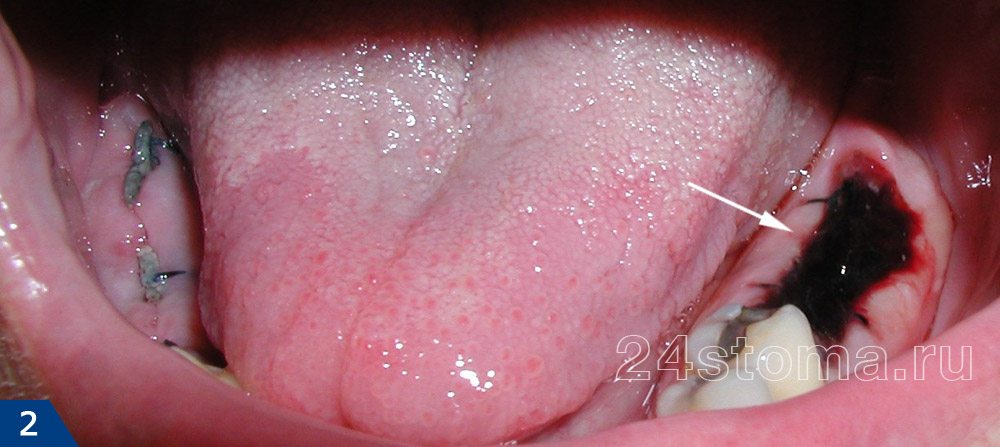
If you have a tooth removed, your cheek is swollen, then under the conditions listed above, it is quite possible to observe yourself for 1 day before taking action and running to the dentist. If during this time you have not noticed a deterioration (and even more so if your slight swelling has already decreased), then it is not necessary to go to the dentist. However, if at least one negative symptom, then you need to urgently sign up for a second examination with the dental surgeon who removed your tooth.
In what cases it is necessary to run to the doctor -
In all of the following cases, you should immediately go to the doctor. It may be necessary to wash the hole of the extracted tooth, lay the medicine in the hole, make a laxative incision along the gum to release pus, etc.
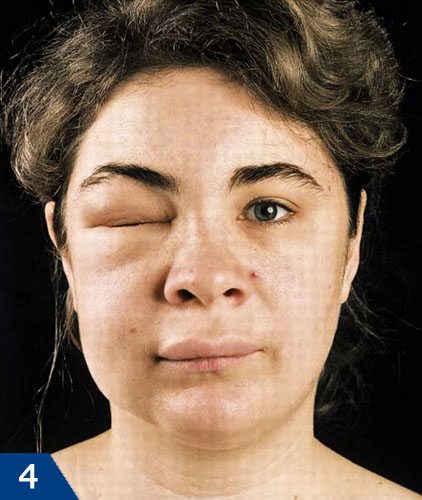
- There is severe severe pain with no signs of improvement –
and even more so if the pain continues to increase ... Remember that severe pain is normal only after a complex removal with cutting out the bone (within 1-2 days), in all other cases it is an unfavorable symptom. In any case, temporarily relieve pain will help you.
- Increasing tension in soft tissues in the area of edema
- Increasing temperature and feeling unwell
- Increasing difficulty opening the mouth and painful swallowing
- There is no blood clot in the socket of the extracted tooth –
the clot could fall out by itself, or you rinsed it out. This condition is often referred to as "dry socket". In any case, the absence of a clot will lead to the development of bone inflammation and severe pain. Waiting for the pain and inflammation to go away on their own is pointless. You need to immediately go to the doctor so that he closes the hole with a special medicine.
If swelling appeared only 3-4 days after tooth extraction
–
in most cases, swelling of the cheek after tooth extraction develops by the end of the first day - the next morning after extraction. But in some cases, swelling develops only a few days after removal. This is usually associated with the gradual suppuration of a blood clot in the hole of the extracted tooth, or the development of inflammation in the empty hole (Fig. 5). This state is called.
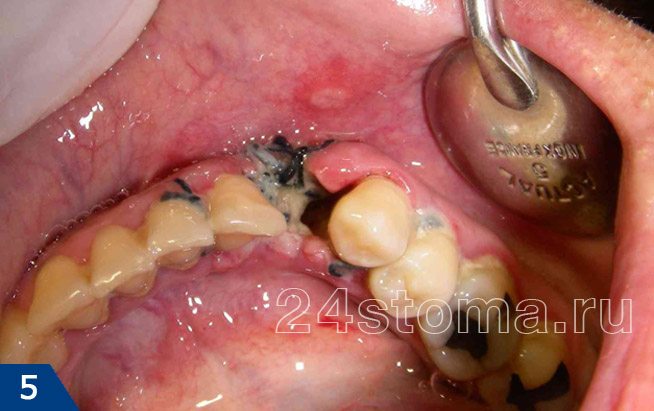
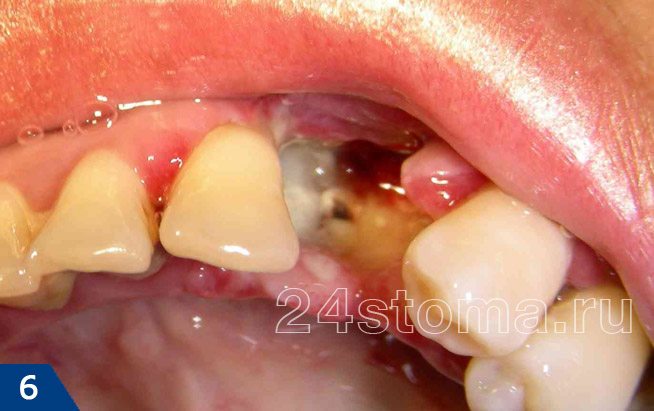
With alveolitis of the hole, it is pointless to rinse your mouth with antiseptics, drink antibiotics, because. it will not lead to improvement. Here, too, you just need to go to the doctor, so that the doctor cleans the hole with tools from the necrotic decay of the blood clot and food residues, puts a special medicine in the hole, etc ...
In some cases, after tooth extraction, a slight swelling (hematoma) may appear on the gum. The first days it can be painless or slightly painful and does not lead to the development of swelling of the cheek. But if the hematoma suppurates, then there are growing pains, increasing swelling of the cheek, and here, too, you urgently need to run to the dentist and open the hematoma (make an incision along the gum).
Cases when the appearance of edema is natural -
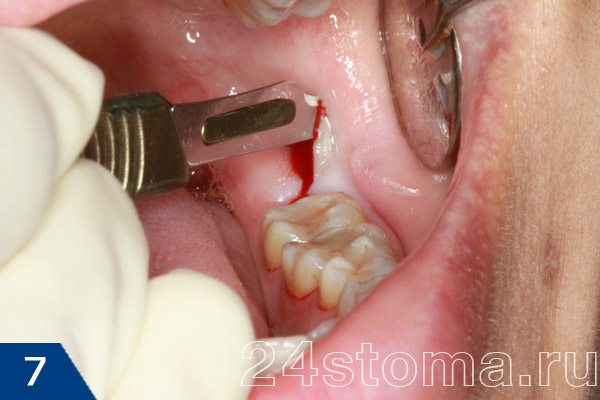
We hope that our article on the topic: “After tooth extraction, the cheek is swollen: what to do” turned out to be useful to you! Author: dentist





